Showing Spotlights 9 - 16 of 22 in category All (newest first):
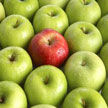 Nanotechnology, specifically nanomaterial engineering, has begun to find applications in agriculture and the food industry. Some nanomaterials have unique physicochemical properties that can be exploited for beneficial effects on foods, leading to increased shelf life, enhanced flavor release, and increased absorption of nutrients and other bioactive components. The ability to detect and to measure a given nanomaterial at key time points in the food lifecycle is critical for estimating the nanoscale properties of interest that dictate manufacturing consistency and safety, as well as understanding potential beneficial or adverse effects from food intercalation.
Nanotechnology, specifically nanomaterial engineering, has begun to find applications in agriculture and the food industry. Some nanomaterials have unique physicochemical properties that can be exploited for beneficial effects on foods, leading to increased shelf life, enhanced flavor release, and increased absorption of nutrients and other bioactive components. The ability to detect and to measure a given nanomaterial at key time points in the food lifecycle is critical for estimating the nanoscale properties of interest that dictate manufacturing consistency and safety, as well as understanding potential beneficial or adverse effects from food intercalation.
Aug 22nd, 2014
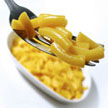 Some of the recent and significant developments in the area of nanotechnology applications for food quality control are discussed in this article. In food quality testing methods/devices, nanomaterials have various advantages over conventional materials such as ultra-sensitivity, selectivity, multiple targeting, portability, reproducible data processing, implantable conformability, on-board intelligence, non-invasive testing of packaged items, etc. Analytical chemistry plays a prominent role in food quality control and has already started taking advantages from the versatility and novel merits of nanoscience.
Some of the recent and significant developments in the area of nanotechnology applications for food quality control are discussed in this article. In food quality testing methods/devices, nanomaterials have various advantages over conventional materials such as ultra-sensitivity, selectivity, multiple targeting, portability, reproducible data processing, implantable conformability, on-board intelligence, non-invasive testing of packaged items, etc. Analytical chemistry plays a prominent role in food quality control and has already started taking advantages from the versatility and novel merits of nanoscience.
May 20th, 2014
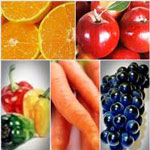 Nanotechnology-based food and health products and food packaging materials are available to consumers in some countries already, and additional products and applications are currently in the research and development stage, and some may reach the market soon. In view of such progress, it is expected that nanotechnology-derived food products will be increasingly available to consumers worldwide in the coming years. Some of these products appear to already be in commercial use in other countries, raising the likelihood that they could become a part of our food supply in the near future, if they are not already. This article looks at how regulators are dealing with the pressures to commercialize nanotech foods and food packaging.
Nanotechnology-based food and health products and food packaging materials are available to consumers in some countries already, and additional products and applications are currently in the research and development stage, and some may reach the market soon. In view of such progress, it is expected that nanotechnology-derived food products will be increasingly available to consumers worldwide in the coming years. Some of these products appear to already be in commercial use in other countries, raising the likelihood that they could become a part of our food supply in the near future, if they are not already. This article looks at how regulators are dealing with the pressures to commercialize nanotech foods and food packaging.
May 16th, 2012
 Following up on our recent Nanowerk Spotlight on nanofoods, new research shows that consumers could be exposed to nanoparticles in food by a much larger degree than has been expected so far. For a modern consumer it is hard to avoid titanium dioxide (TiO2) - a widely used additive in food, personal care and other household products. Approximately 7 million tons of bulk TiO2 are produced annually and used as white pigment in order to provide whiteness and opacity to foods and other products. Many applications of titanium dioxide would benefit from smaller primary particle sizes, and we can expect the percentage of TiO2 that is produced in or near the nano range to increase.
Following up on our recent Nanowerk Spotlight on nanofoods, new research shows that consumers could be exposed to nanoparticles in food by a much larger degree than has been expected so far. For a modern consumer it is hard to avoid titanium dioxide (TiO2) - a widely used additive in food, personal care and other household products. Approximately 7 million tons of bulk TiO2 are produced annually and used as white pigment in order to provide whiteness and opacity to foods and other products. Many applications of titanium dioxide would benefit from smaller primary particle sizes, and we can expect the percentage of TiO2 that is produced in or near the nano range to increase.
Feb 15th, 2012
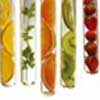 Back in the early 2010s, food nanotechnology seemed to be a very hot topic and large industrial food companies were eager to explore new opportunities offered by nanotechnology applications. Then, as critical voices from NGOs and regulators appeared, the food industry went into silent mode. But that doesn't mean that food nanotechnologies aren't being researched and developed in labs around the world. Here is an overview of what nanotechnology applications are currently being researched, tested and in some cases already applied in food technology. It appears that we are still some way from seeing "Frankenfoods" in supermarket shelves. According to a recent commentary by an FDA official, what's holding back the introduction of nanofoods is the hesitation of the food industry, fearing a public backlash along the lines of what happened wit genetically modified foods.
Back in the early 2010s, food nanotechnology seemed to be a very hot topic and large industrial food companies were eager to explore new opportunities offered by nanotechnology applications. Then, as critical voices from NGOs and regulators appeared, the food industry went into silent mode. But that doesn't mean that food nanotechnologies aren't being researched and developed in labs around the world. Here is an overview of what nanotechnology applications are currently being researched, tested and in some cases already applied in food technology. It appears that we are still some way from seeing "Frankenfoods" in supermarket shelves. According to a recent commentary by an FDA official, what's holding back the introduction of nanofoods is the hesitation of the food industry, fearing a public backlash along the lines of what happened wit genetically modified foods.
Feb 2nd, 2012
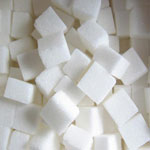 Over the past few years, scientists have taken advantage of the unique optical and other physical properties of metal nanoparticles to create a wide range of nanotechnology probes for electronic, optical, and microgravimetric transduction of different biomolecular recognition events. An interesting approach that was reported a couple of years ago deals with a technique that estimates the antioxidant power of certain food samples by measuring the generation and growth of gold nanoparticles. Researchers have built on these findings by developing a novel optical nanoprobe that can analyze the total reducing sugar content of samples. This technique could lead to the development of inexpensive and disposable optical nanoprobes that could find applications in a host of industrial, biomedical and clinical fields.
Over the past few years, scientists have taken advantage of the unique optical and other physical properties of metal nanoparticles to create a wide range of nanotechnology probes for electronic, optical, and microgravimetric transduction of different biomolecular recognition events. An interesting approach that was reported a couple of years ago deals with a technique that estimates the antioxidant power of certain food samples by measuring the generation and growth of gold nanoparticles. Researchers have built on these findings by developing a novel optical nanoprobe that can analyze the total reducing sugar content of samples. This technique could lead to the development of inexpensive and disposable optical nanoprobes that could find applications in a host of industrial, biomedical and clinical fields.
Mar 24th, 2009
 Silver has long been recognized for its infection-fighting properties and it has a long and intriguing history as an antibiotic in human health care. In ancient Greece and Rome, silver was used to fight infections and control spoilage. In its modern form, silver nanoparticles have become the promising antimicrobial material in a variety of applications because they can damage bacterial cells by destroying the enzymes that transport cell nutrient and weakening the cell membrane or cell wall and cytoplasm. For instance, an increasingly popular applications is to use pure silver, or silver-coated, nanoparticles in food packaging materials such as plastic bags, containers, films or pallet. A new study has found that silver nanoparticles can bind with double-stranded DNA and, possibly in this way, result in compromised DNA replication fidelity both in vitro and in vivo. But the study could not conclusively determine whether silver nanoparticles directly interact with DNA polymerases.
Silver has long been recognized for its infection-fighting properties and it has a long and intriguing history as an antibiotic in human health care. In ancient Greece and Rome, silver was used to fight infections and control spoilage. In its modern form, silver nanoparticles have become the promising antimicrobial material in a variety of applications because they can damage bacterial cells by destroying the enzymes that transport cell nutrient and weakening the cell membrane or cell wall and cytoplasm. For instance, an increasingly popular applications is to use pure silver, or silver-coated, nanoparticles in food packaging materials such as plastic bags, containers, films or pallet. A new study has found that silver nanoparticles can bind with double-stranded DNA and, possibly in this way, result in compromised DNA replication fidelity both in vitro and in vivo. But the study could not conclusively determine whether silver nanoparticles directly interact with DNA polymerases.
Feb 19th, 2009
 The European Commission's current assessment of nanotechnology applications to the food chain range from the almost certain (e.g., membranes, antibacterials, flavors, filters, food supplements, stabilizers) through to the probable (e.g., pathogen and contaminant sensors, environmental monitors, coupled sensing and warning devices, and remote sensing and tracking devices) to the improbable (e.g., 'creating unlimited amounts of food by synthesis at the atomic level'). The European Commission has now decided that it would like to address the possible safety issues arising from nanoscience and nanotechnologies in a stepwise fashion, thereby facilitating the establishment of a roadmap for future actions in the area of food and feed safety and the environment. As a first step in this exercise, the Commission has asked the European Food Safety Authority (EFSA) to prepare a scientific opinion in order to identify the needs for risk assessment, to assess the appropriateness of methods for risk assessment, and to perform an assessment of the potential risks posed by nanoscience and nanotechnologies in the food and feed area, and assess the appropriateness of current risk assessment methods.
The European Commission's current assessment of nanotechnology applications to the food chain range from the almost certain (e.g., membranes, antibacterials, flavors, filters, food supplements, stabilizers) through to the probable (e.g., pathogen and contaminant sensors, environmental monitors, coupled sensing and warning devices, and remote sensing and tracking devices) to the improbable (e.g., 'creating unlimited amounts of food by synthesis at the atomic level'). The European Commission has now decided that it would like to address the possible safety issues arising from nanoscience and nanotechnologies in a stepwise fashion, thereby facilitating the establishment of a roadmap for future actions in the area of food and feed safety and the environment. As a first step in this exercise, the Commission has asked the European Food Safety Authority (EFSA) to prepare a scientific opinion in order to identify the needs for risk assessment, to assess the appropriateness of methods for risk assessment, and to perform an assessment of the potential risks posed by nanoscience and nanotechnologies in the food and feed area, and assess the appropriateness of current risk assessment methods.
Oct 20th, 2008
 Nanotechnology, specifically nanomaterial engineering, has begun to find applications in agriculture and the food industry. Some nanomaterials have unique physicochemical properties that can be exploited for beneficial effects on foods, leading to increased shelf life, enhanced flavor release, and increased absorption of nutrients and other bioactive components. The ability to detect and to measure a given nanomaterial at key time points in the food lifecycle is critical for estimating the nanoscale properties of interest that dictate manufacturing consistency and safety, as well as understanding potential beneficial or adverse effects from food intercalation.
Nanotechnology, specifically nanomaterial engineering, has begun to find applications in agriculture and the food industry. Some nanomaterials have unique physicochemical properties that can be exploited for beneficial effects on foods, leading to increased shelf life, enhanced flavor release, and increased absorption of nutrients and other bioactive components. The ability to detect and to measure a given nanomaterial at key time points in the food lifecycle is critical for estimating the nanoscale properties of interest that dictate manufacturing consistency and safety, as well as understanding potential beneficial or adverse effects from food intercalation.
 Subscribe to our Nanotechnology Spotlight feed
Subscribe to our Nanotechnology Spotlight feed





